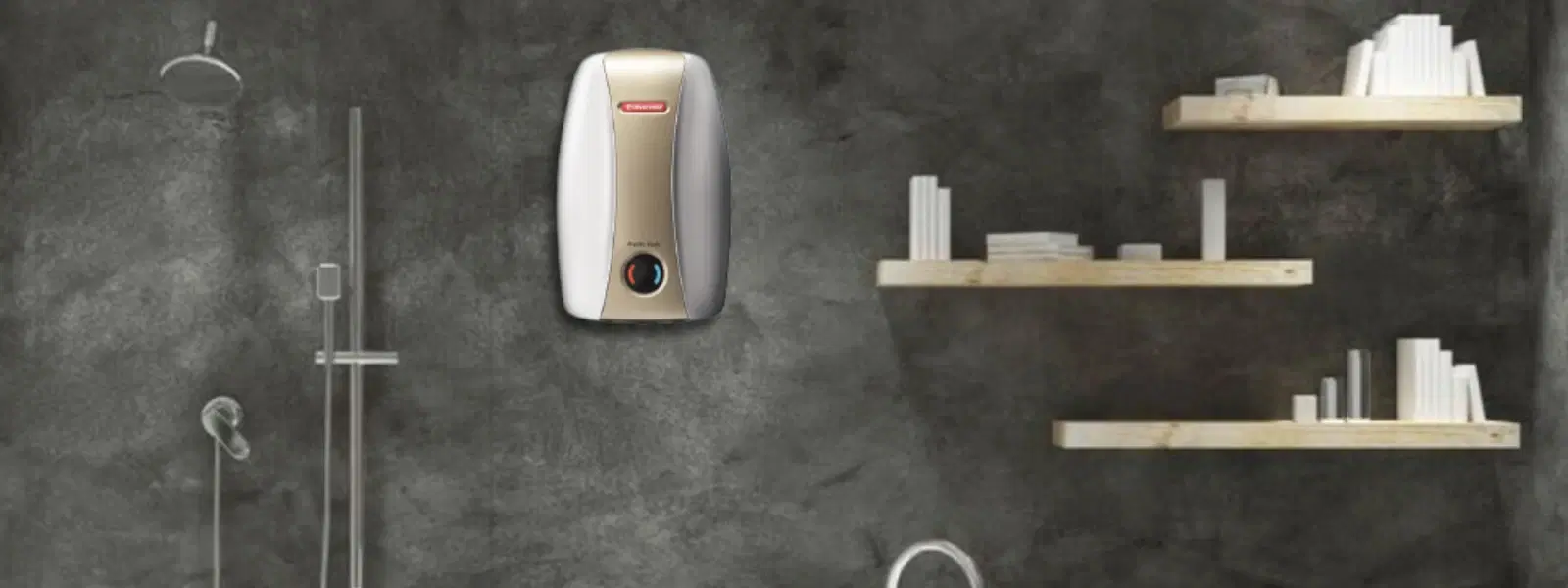
Home Appliances
•03 min read

Buy AO Smith Xpress 25 Litre 5 Star Vertical Storage Geyser with Safety Valve (White) online at best prices from Croma. Check product details, reviews & more. Shop now!
Installing a geyser might seem like a daunting task, but with the right guidance, it becomes a manageable process. This essential checklist will help you understand how to connect a geyser safely, covering everything from gathering the necessary tools to testing your setup. Whether you are a DIY enthusiast or planning for professional installation, this guide is designed to ensure efficiency, safety, and a smooth process.
Before you begin, it is important to have all the tools and materials ready. You will need a wrench, screwdriver, pipe cutter, and other standard tools for plumbing. Materials such as geyser connection pipes (available in sizes like 2 ft or 5 ft), Teflon tape for leak prevention, and a circuit breaker are essential. A geyser connection diagram can also act as a valuable reference during installation.
Check that your power supply is compatible with the circuit breaker you intend to use. Ensure that the plumbing setup is ready by verifying the compatibility of the water inlet and outlet pipes. Additionally, assess the strength of the wall where the geyser will be mounted to ensure it can support the appliance securely.
Safety is paramount when connecting a geyser. Always start by turning off the main power supply. If you are replacing an old system, make sure to drain any residual water before proceeding. Keep the area free from flammable materials and maintain a clean workspace to avoid any potential hazards.
Begin by finding the right position on the wall. Mark and drill holes carefully following the guidelines provided in your geyser installation guide. Securely fixing the appliance is vital, so do not rush through this step. Whether it is a water heater wiring or mounting, precision is essential.

Buy WARMEX Rapido 15 Litres 5 Star Vertical Storage Water Geyser with Over Heat Protection (White) online at best prices from Croma. Check product details, reviews & more. Shop now!
Next, it’s time to connect the water pipes. Follow these geyser plumbing instructions to connect the inlet and outlet pipes accurately. Wrap Teflon tape around the threads to ensure a leak-proof connection. Check that the pipe sizes are correct and ensure that the fittings match perfectly for a smooth connection.
Now, focus on the electrical connections. For an electric geyser connection, first, ensure that the power remains switched off. Connect the appliance to the circuit breaker, making sure to adhere to water heater wiring tips and safety precautions. Grounding the geyser properly helps to prevent electrical hazards and safeguards your home.
Once the mounting, water pipes, and electrical connections are complete, it is important to test the system. Fill the tank with water and check for any leaks. Follow the geyser setup process by testing the electrical connection as well; this will help confirm that the unit is functioning correctly before it is fully operational.
Even with the best plans, minor errors can occur. Avoid over-tightening connections that can lead to damage, and ensure you are using compatible pipes and wiring. Each component should match the standards specified in your how to install a geyser guide to ensure a safe and efficient setup.
Maintaining your geyser is as important as the installation. Regularly check for leaks or loose connections and flush the tank periodically to remove sediment buildup. These simple practices can extend the life of your water heater and keep it running efficiently.
If you notice any signs of issues or if the setup seems more complicated than expected, it might be wise to call in a professional. Sometimes, expert guidance can save time and ensure that the installation meets all safety standards.
Expert Tip: Why Proper Grounding is Crucial for Your Geyser’s Safety
Improper grounding of your geyser can lead to electrical hazards, including short circuits or shocks. Always ensure the geyser is connected to a properly grounded outlet to protect both your appliance and your household.
Yes, you can install a geyser yourself if you have the necessary tools, materials, and familiarity with plumbing and electrical systems. However, for complex setups, seeking professional assistance is recommended.
The key requirements include a reliable power supply, a compatible plumbing system, and a strong wall suitable for mounting the unit securely.
An electric geyser is installed by securely mounting it, connecting the water inlet and outlet pipes, wiring it to a circuit breaker according to water heater wiring tips, and finally testing the setup for leaks and proper electrical function.
Ensure that the main power is switched off. Then, using the appropriate wiring, connect the live, neutral, and ground wires to the corresponding terminals on the circuit breaker following electric geyser connection guidelines.
Typically, 2 ft or 5 ft pipes are used depending on the distance between the geyser and the water source. Always check that the sizes match the inlet and outlet fittings for a secure fit.
Connecting a geyser safely requires thorough preparation, adherence to safety precautions, and a step-by-step approach. By following this checklist, you can ensure that your geyser installation is efficient and secure, ultimately contributing to a smoother home improvement experience. For those who appreciate the ease and seamless shopping experience, Tata Neu offers the added benefit of earning NeuCoins on every transaction, giving you even more reasons to shop smartly and conveniently.